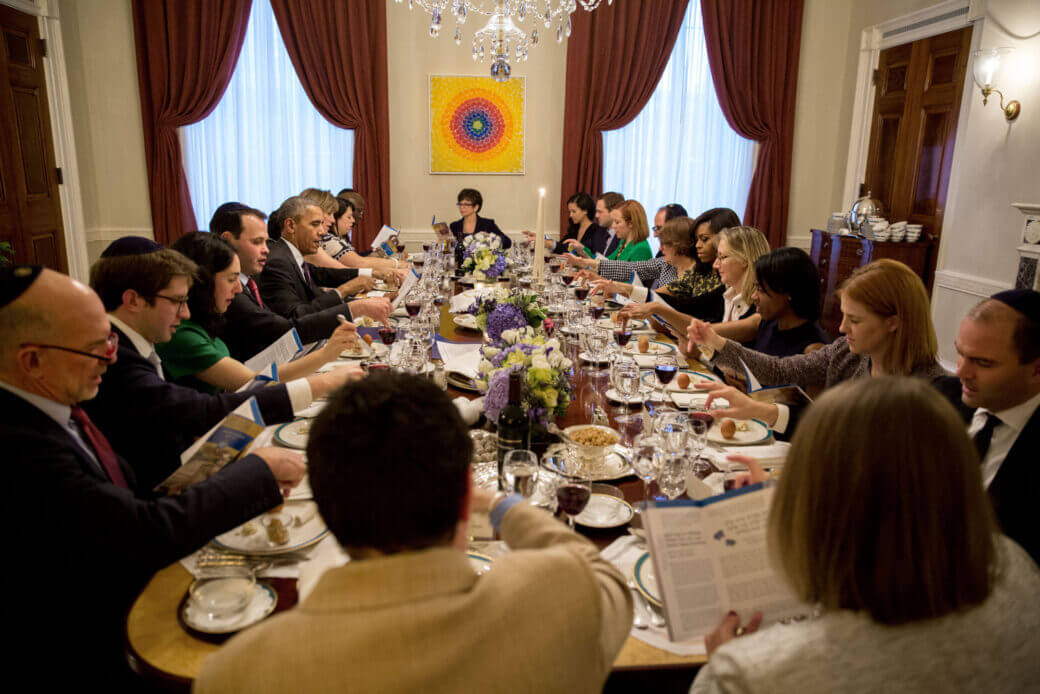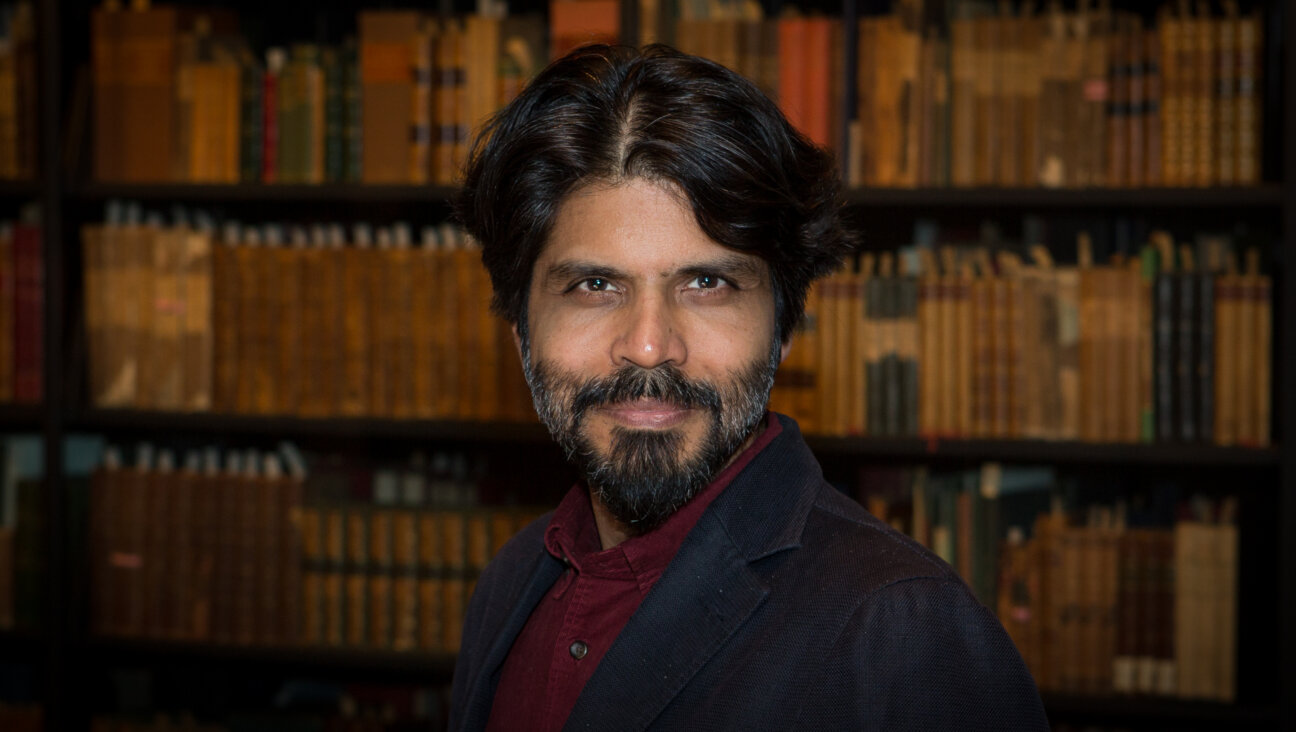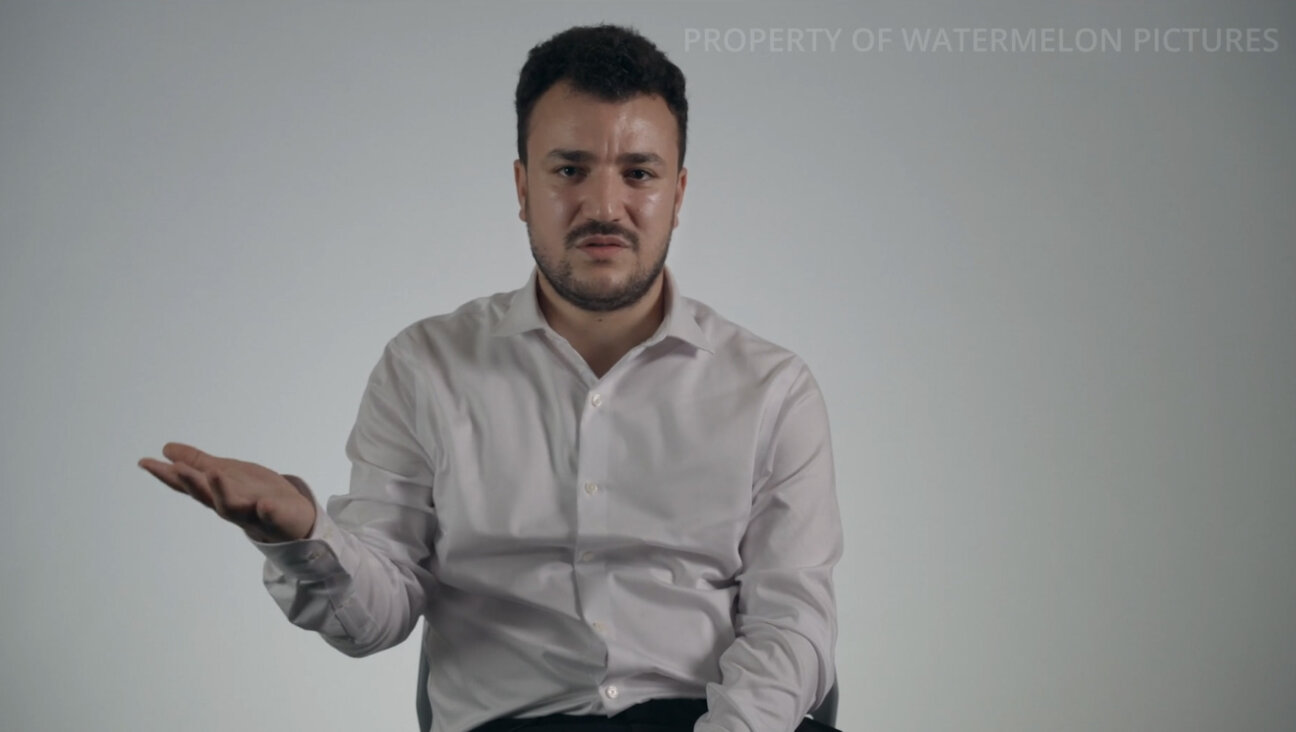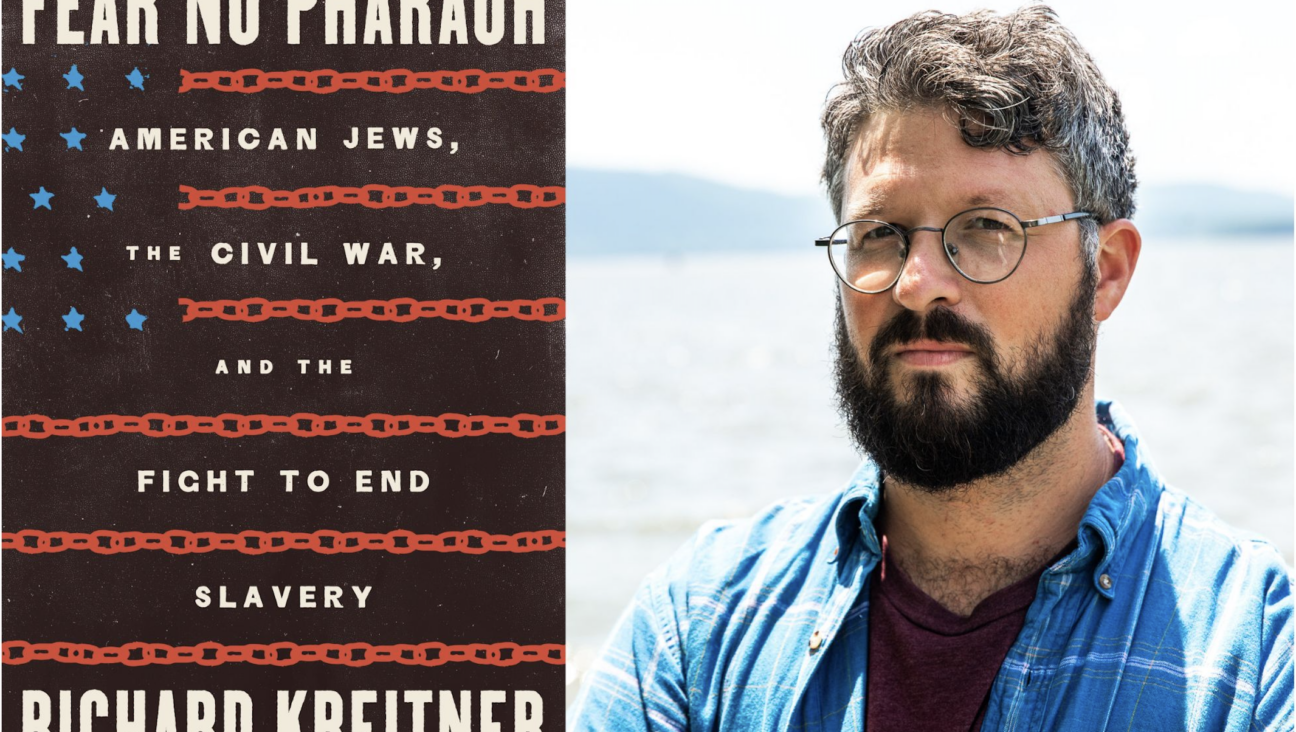Songbook Recaptures Lost Melodies
Heard any good Yiddish folksongs lately?
Chances are good that the answer is “no.” Not because there aren’t any good Yiddish folksongs to be heard; for generations, the Yiddish-speaking Jews of Eastern Europe sang innumerable songs about love and loss, death and marriage. They sang to their children to soothe them to sleep, and they sang at work to relieve the drudgery of menial labor.
Yet, the same Yiddish-speaking immigrants who clung so fiercely to their customary foods in the New World — to their blintzes and bagels, their knishes and kishkes — were much less inclined to hold on to their songs, which they quickly abandoned in favor of popular and theatrical music. “In North America, this is what got lost in the culture of those immigrants: the folksongs,” said Mark Slobin, a professor of music at Wesleyan University who co-edited, with Chana Mlotek, “Yiddish Folksongs From the Ruth Rubin Archive” (Wayne State University Press, 2007). “They stopped singing about the abandoned girl who threw her baby into the river. That got lost very fast.”
Rubin had been preparing the book for publication back in 1985, when illness forced her to cut the project short. She died in 2000, and it wasn’t until several years later that Slobin found the unfinished manuscript in the archives of the YIVO Institute for Jewish Research. “So I innocently said, ‘Oh, let’s publish it!’” he recalled in an interview with the Forward. “Five years later.…” That rueful ellipsis refers in part to the considerable work required to publish any musical anthology, especially one as handsomely presented as this. Each song includes a transliteration of the Yiddish lyrics, a full English translation and a well-ordered transcription of the melody that clearly indicates the appropriate rhythm. There are informative introductory and prefatory essays by the editors and by Rubin, an index of songs by their first lines and, of course, the songs themselves: more than 150 of them, grouped by such themes as “Lullabies,” “Weddings and Marriage” and “Dancing, Drinking, and Humor.” Without Slobin and Mlotek’s intervention, they probably all would have remained in the YIVO archives until the end of time.
That would have been a shame. Rubin was the most important Yiddish folksong collector of the postwar period; at a time when virtually no one showed much interest in documenting the musical heritage of Jewish immigrants, she doggedly tracked down sources in the United States and Canada, recorded and transcribed their songs, and published her findings in scholarly journals and popular books. She also traveled the country performing Yiddish folksongs in their original form, without the common practice of using instrumental accompaniment or the trappings of art song. (Composer Sholom Secunda, for example, based a number of liedlike songs on traditional Yiddish models. But these highly refined works, which were delivered in operatic style atop harmonically sophisticated piano accompaniment, were far removed from the country cousins that had initially inspired them.)
To some extent, Rubin was a product of her time. Born in Bessarabia in 1906, she grew up in Montreal and attended that city’s Yiddish-speaking schools. She moved to New York City as a teenager, and began collecting Yiddish folksongs among the city’s Eastern European immigrants in the 1940s, when an influx of wartime refugees provided a rare opportunity to gather material from a large pool of singers. Rubin published her first book, “A Treasury of Jewish Folksong,” in 1950, at the height of the folk-music boom; she released her first (and last) record, “Jewish Life: The Old Country,” on the legendary Folkways label in 1958, just as field recordings of ethnic music were becoming more common. (“Yiddish Folksongs From the Ruth Rubin Archive” includes a copy of the album, reissued for the first time on CD.) But Rubin stood apart from most North American folklorists and ethnomusicologists of the period in at least two respects: She enjoyed native fluency in her subject matter, and she was just about the only serious researcher who showed any interest at all in Jewish music.
“What made Ruth so important was that she cared about collecting songs from people when they were around, and when no one cared,” Slobin said. “She was very much a voice in the wilderness.”
Rubin also stuck closer than most to her source material. The noted folklorist Y.L. Cahan learned his songs from others, then sang them to someone else who ultimately transcribed them — a musical form of broken telephone. Rubin was the first researcher to record Yiddish folksongs directly to tape, and she provided her own extremely accurate transcriptions. And unlike Mlotek and her late husband, Yosl, whose Yiddish folksong anthologies Slobin deems “indispensable” (the two also wrote the “Perl fun der Yiddisher Poezie” column, which began in 1970 and which Chana still writes, for the Forverts), Rubin did not recast the material she collected in standard Yiddish, but instead retained the idiosyncratic flavor of her singers’ regional dialects.
The result is an unusually faithful snapshot of a folk art that once flourished across the broad expanse of Eastern Europe known as the Pale of Settlement. And while it may not be enough to provide a comprehensive picture of Yiddish folksong — “We’re talking about millions of people living over millions of square miles,” Slobin said — it does add a sizable piece to a very large puzzle.
The Forward is free to read, but it isn’t free to produce

I hope you appreciated this article. Before you go, I’d like to ask you to please support the Forward.
At a time when other newsrooms are closing or cutting back, the Forward has removed its paywall and invested additional resources to report on the ground from Israel and around the U.S. on the impact of the war, rising antisemitism and polarized discourse.
Readers like you make it all possible. We’ve started our Passover Fundraising Drive, and we need 1,800 readers like you to step up to support the Forward by April 21. Members of the Forward board are even matching the first 1,000 gifts, up to $70,000.
This is a great time to support independent Jewish journalism, because every dollar goes twice as far.
— Rachel Fishman Feddersen, Publisher and CEO
2X match on all Passover gifts!
Most Popular
- 1

Film & TV What Gal Gadot has said about the Israeli-Palestinian conflict
- 2

News A Jewish Republican and Muslim Democrat are suddenly in a tight race for a special seat in Congress
- 3

Fast Forward The NCAA men’s Final Four has 3 Jewish coaches
- 4
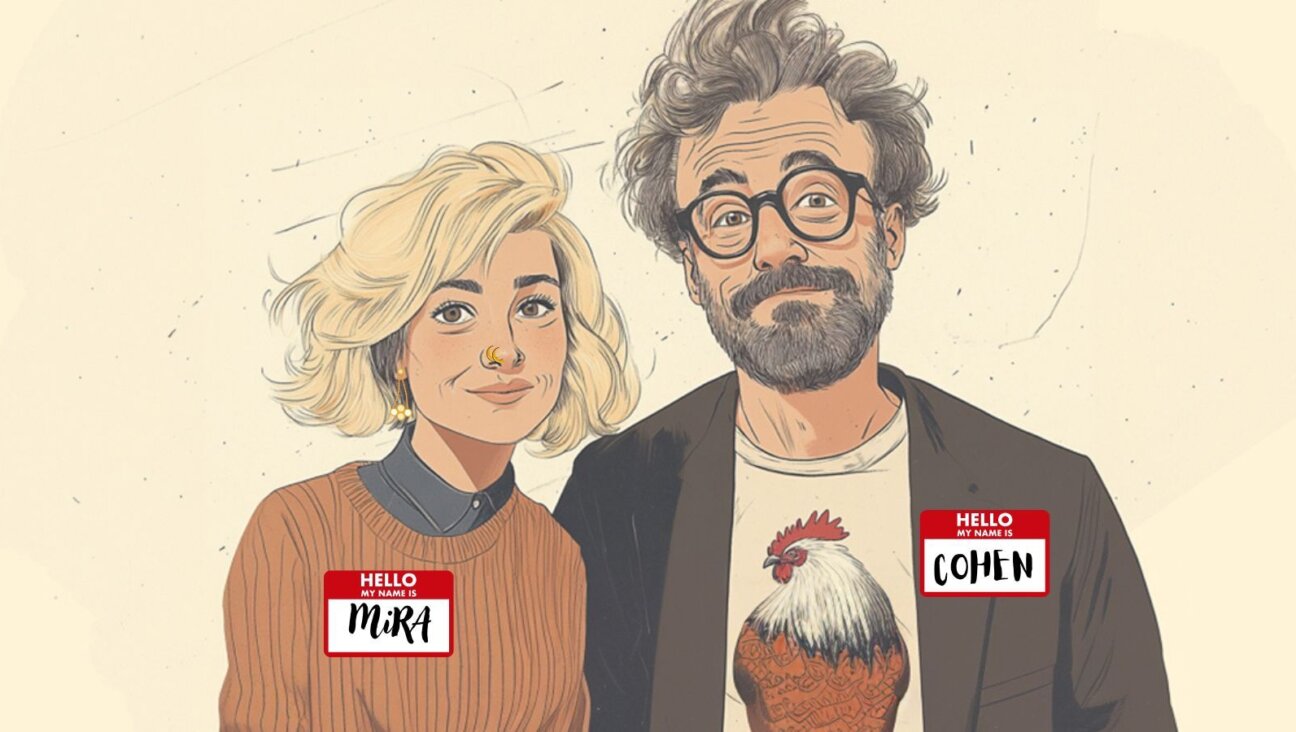
Culture How two Jewish names — Kohen and Mira — are dividing red and blue states
In Case You Missed It
-

Fast Forward ‘Another Jewish warrior’: Fine wins special election for U.S. House seat
-

Fast Forward Cory Booker proclaims, ‘Hineni’ — I am here — 19 hours into anti-Trump Senate speech
-

Opinion In Trump’s war against campus antisemitism, hate the tactics but don’t ignore the problem
-

Yiddish כ׳בענק נאָך די וועלטלעכע ייִדן וואָס האָבן אָפּגעריכט אַ טראַדיציאָנעלן סדר Longing for those secular Jews who led a traditional seder
מײַן פֿעטער יונה האָט נישט געהיט שבת און כּשרות אָבער בײַם אָפּריכטן דעם סדר האָט ער געקלונגען ווי אַ פֿרומער ייִד
-
Shop the Forward Store
100% of profits support our journalism
Republish This Story
Please read before republishing
We’re happy to make this story available to republish for free, unless it originated with JTA, Haaretz or another publication (as indicated on the article) and as long as you follow our guidelines.
You must comply with the following:
- Credit the Forward
- Retain our pixel
- Preserve our canonical link in Google search
- Add a noindex tag in Google search
See our full guidelines for more information, and this guide for detail about canonical URLs.
To republish, copy the HTML by clicking on the yellow button to the right; it includes our tracking pixel, all paragraph styles and hyperlinks, the author byline and credit to the Forward. It does not include images; to avoid copyright violations, you must add them manually, following our guidelines. Please email us at [email protected], subject line “republish,” with any questions or to let us know what stories you’re picking up.







